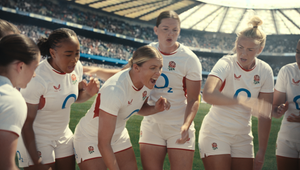
We Need to Make Accessibility More Accessible to Brands

As Global Accessibility Awareness Day (GAAD) returns, I want to use it as an opportunity to shine a spotlight on a subject that, frankly, never leaves our desk at Bernadette. Accessibility isn’t an annual to-do or a compliance box to tick: it sits at the core of all great digital experiences.
But worryingly, time and time again we see that misconceptions around digital accessibility persist. 'Accessibility makes design dull.' 'It could compromise your brand aesthetic.' 'It's a legal headache.' 'It serves a minority.' 'It slows us down.'
In reality, the opposite is true: when done well, accessible design elevates the entire experience — for everyone. Making it clearer, faster, fairer. It creates more human, more usable and more emotionally resonant interfaces. It is, quite simply, better design. It elevates your brand, and your business and gets more people engaged.
Accessibility shouldn’t be an afterthought
Accessibility isn’t something we bolt on at the end. It’s baked into how we design, test, and build from day one. To ensure your digital experiences are truly accessible, you need to plan for accessibility from the start of your website redesign or your app build.
How you approach accessibility in the spaces where people engage with your services is a direct reflection of your brand’s values. That’s why it needs to be considered from the very start — not as an add-on, but as a core design principle.
This can be done by always asking: Who is this for? Who might we be leaving out? Start every project with these two questions.
From there, accessibility becomes an active design lens. Whether it’s applying WCAG 2.2 standards (Web Content Accessibility Guidelines are a set of international standards that help ensure digital content is usable by people with disabilities) directly in design tools like Figma, integrating inclusive language through brand-trained Large Language Models (LLMs), or co-creating with neurodivergent users to ensure lived experience shapes the outcome — it’s all about designing with, not just for, real people.
AI is there to assist
Digital accessibility is a space where we believe AI has the power to unlock meaningful, scalable change. Generative tools are already transforming how we approach inclusion — from real-time alt-text generation to context-aware voice control, predictive assistive tech and content simplification tailored to user needs.
The brands leading in this space treat AI not just as a production tool, but as a dynamic assistant — trained in brand voice, fine-tuned for relevance, and integrated at key moments across the customer journey. Whether working quietly behind the scenes or acting as a visible part of the experience, AI supports the delivery of content that’s contextually aware, inclusive by design, and shaped to help everyone get the most from your services.
Start every project with inclusion (don’t let it be a post-production checklist)
Another shift brands can make today? Invite diverse perspectives earlier in the creative journey. Instead of treating accessibility as a post-production checklist, start every campaign, sprint or product ideation by asking: How would someone with different sensory, cognitive, or physical needs experience this?
That early inclusion opens the door to more thoughtful, effective design. It might mean bringing in broader user groups for co-creation or testing, developing personas that reflect real-world diversity, or pressure-testing early content and interfaces against key accessibility criteria.
At Bernadette, we see accessibility as a craft. It demands rigour, empathy, and imagination. It requires us to make hard things simple and invisible barriers visible. And, in a world where digital experiences shape so much of our lives, we believe that’s some of the most important work we can do. Accessible design isn’t a restriction. It’s a creative act that makes digital experiences better — for everyone.















